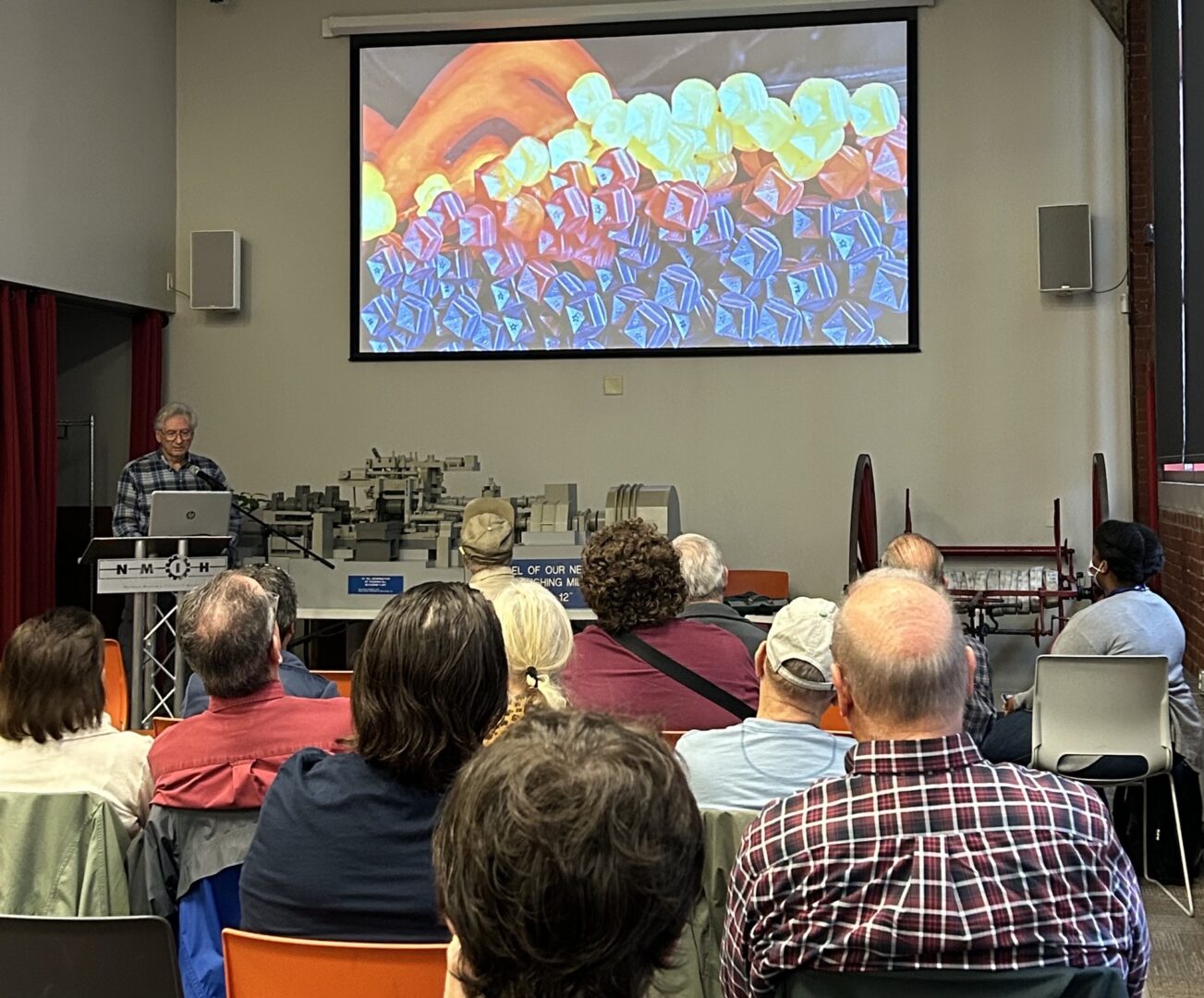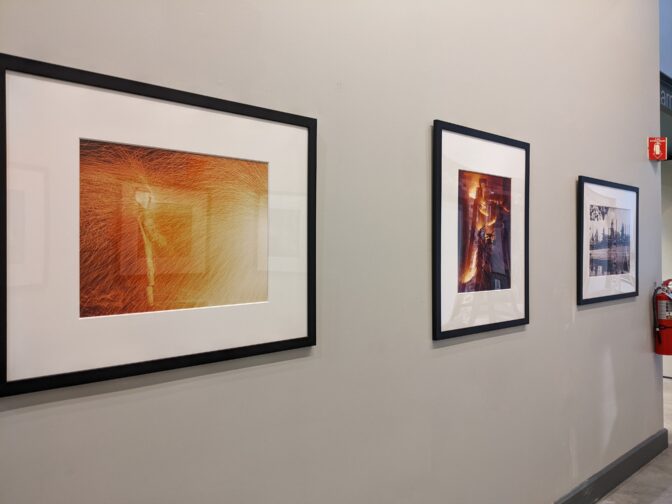
Peter Treiber shared industrial photos he took at Bethlehem Steel and at other places with an audience at the National Museum of Industrial History on November 12, 2022.
Courtesy Andria Zaia

Peter Treiber shared industrial photos he took at Bethlehem Steel and at other places with an audience at the National Museum of Industrial History on November 12, 2022.
Courtesy Andria Zaia

Courtesy Andria Zaia
Peter Treiber shared industrial photos he took at Bethlehem Steel and at other places with an audience at the National Museum of Industrial History on November 12, 2022.
How do you photograph steel in the making and get up close with hot, molten metal?
That was the question at theNational Museum of Industrial History’s (NMIH) presentation “Capturing Steel: Bethlehem Steel Photography With Peter Treiber.”
Peter Treiber, a photographer who worked for Bethlehem Steel, shot photographs that were used in the company’s advertising campaigns during the 1970s and early 80s.
Treiber was born in Brooklyn, N.Y., into a family of painters and photographers.
He shot photos at another company, International Nickel, before coming to the Lehigh Valley. He landed in Easton after seeing a blind ad for a steel mill photographer in the New York Times that eventually ended up being a call to work at Bethlehem Steel.
In addition to taking photos that would be used in advertisements, he documented industrial processes and worked with legal departments, plant managers and research units.
As Treiber put it, “just about any department in the company that needed a photograph, they called us.”
Treiber’s work also expanded to photographing other industries like the nickel industry. He also worked for General Motors, New York Port Authority, Time and Fortune.
On Saturday, Treiber shared photos of his work that has been archived at NMIH.
Treiber said NMIH collected a lot of his work after companies like Bethlehem Steel shut down their marketing departments and sold off or shipped out archives. Other parts of his collection have lived on at other museums as well as private and corporate collections around the country.

Olivia Richardson / LehighValleyNews.Com
Peter Treiber’s work displayed at NMIH will also be shared in NMIH’s digital collection.
Treiber has taken thousands of photographs, documenting the emergence of fiery steel from furnaces, workers in reflector suits engulfed by sparks and the forging of hot metal.
“I cracked a number of filters, especially in the early days of digital,” he said.
While working for Lehigh Heavy Forge, Treiber recalled, “We had to have an infrared filter on the front of the camera. It was part of the early days of digital photography and I cracked several of them because it was so hot. That infrared filter was designed to block the infrared energy so it absorbed it and boom! Cracked.”
Capturing photos often involved Treiber standing about 20 feet away from molten metal. There were times where Treiber said he was shocked that workers wouldn’t have heat reflecting suits on as they went about their day.
Treiber and other photographers would sometimes try to get photos while everything was in motion, resulting in crew members looking like ghosts in their heat reflecting suits, blurry and moving about the steel floor.
“That was always our problem,” Treiber said. “We were always trying to take pictures of stuff that was moving.”
Treiber also photographed coal mines as part of documenting the creation of steel.
Photographing in the mines came with a unique set of problems. He said managers of the mines were skeptical of cameramen using flash bulbs, as they emitted a spark that could cause the mine to explode.
“The years that I did it in other mines, I would take underwater photography strobes that were guaranteed to not get any coal mine gas into them so that it was safe to use,” Treiber said.
In 1982, Treiber’s work for Bethlehem Steel ended. He said most of the advertising marketing department was laid off and he went freelance.
Treiber’s work at the NMIH will be displayed at the museum throughout all of November as part of ArtsQuest’s Invision Photo Festival. The festival showcases photography and photo-based arts. More than 1,500 photos of Treiber’s can be accessed.
Treiber also has a book out with co-author and writer Bette Kovach, another former Bethlehem Steel employee, called “Inside Bethlehem Steel: The Final Quarter Century.”

Get insights into WITF’s newsroom and an invitation to join in the pursuit of trustworthy journalism.
The days of journalism’s one-way street of simply producing stories for the public have long been over. Now, it’s time to find better ways to interact with you and ensure we meet your high standards of what a credible media organization should be.